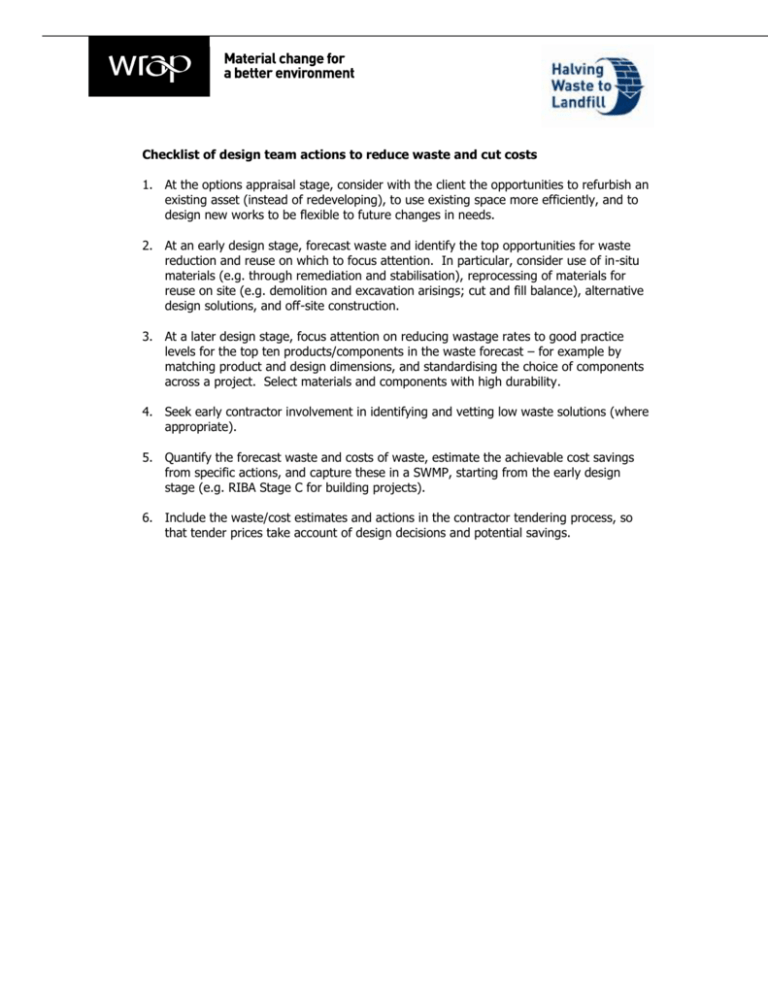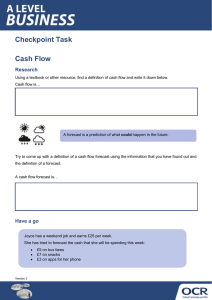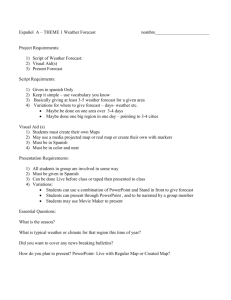Construction Commitments: Halving waste to landfill Action
advertisement

Checklist of design team actions to reduce waste and cut costs 1. At the options appraisal stage, consider with the client the opportunities to refurbish an existing asset (instead of redeveloping), to use existing space more efficiently, and to design new works to be flexible to future changes in needs. 2. At an early design stage, forecast waste and identify the top opportunities for waste reduction and reuse on which to focus attention. In particular, consider use of in-situ materials (e.g. through remediation and stabilisation), reprocessing of materials for reuse on site (e.g. demolition and excavation arisings; cut and fill balance), alternative design solutions, and off-site construction. 3. At a later design stage, focus attention on reducing wastage rates to good practice levels for the top ten products/components in the waste forecast – for example by matching product and design dimensions, and standardising the choice of components across a project. Select materials and components with high durability. 4. Seek early contractor involvement in identifying and vetting low waste solutions (where appropriate). 5. Quantify the forecast waste and costs of waste, estimate the achievable cost savings from specific actions, and capture these in a SWMP, starting from the early design stage (e.g. RIBA Stage C for building projects). 6. Include the waste/cost estimates and actions in the contractor tendering process, so that tender prices take account of design decisions and potential savings.











